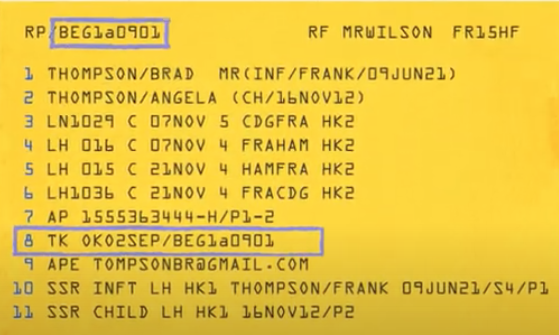Difference between revisions of "Passenger Name Record"
From MgmtWiki
(→References) |
(→Retention) |
||
| Line 29: | Line 29: | ||
* Data may be retained for 5 years (archives may be kept an additional 10 years) | * Data may be retained for 5 years (archives may be kept an additional 10 years) | ||
* Six months after the flight the data must be depersonalized | * Six months after the flight the data must be depersonalized | ||
| + | |||
| + | ==Order ID== | ||
| + | A new record being standardized by IATA to hold all of a passenger's information. | ||
==References== | ==References== | ||
Revision as of 14:53, 15 July 2022
Contents
Full Title or Meme
An identifier originally for airline passengers.
Context
After the attacks on 9-11 there was a major push to be sure that passengers on airlines were well identified and vetted.
Content
- PNR Code and last person to update the record (usually airline personnel)
- Name primary
- Name Others
- Seat No
- Seat No
- Return
- Return
- Contact phone - holder or agent
- Ticket Date etc.
- Contact Details
- Special Servies
- Many other line items include FP = Financial Payment info
Secure Flight Passenger Data
This is sent by the airline to the TSA or similar security agency
- Name
- DOB
- Gender
- Redress number - to disambiguate passengers with same name as a do-not-fly person
Retention
- Data may be retained for 5 years (archives may be kept an additional 10 years)
- Six months after the flight the data must be depersonalized
Order ID
A new record being standardized by IATA to hold all of a passenger's information.
References
- Passenger Name Record (PNR): Meaning, Purpose, and Future (2022-07-15) You Tube
- See also wiki page for Power of Passengers
